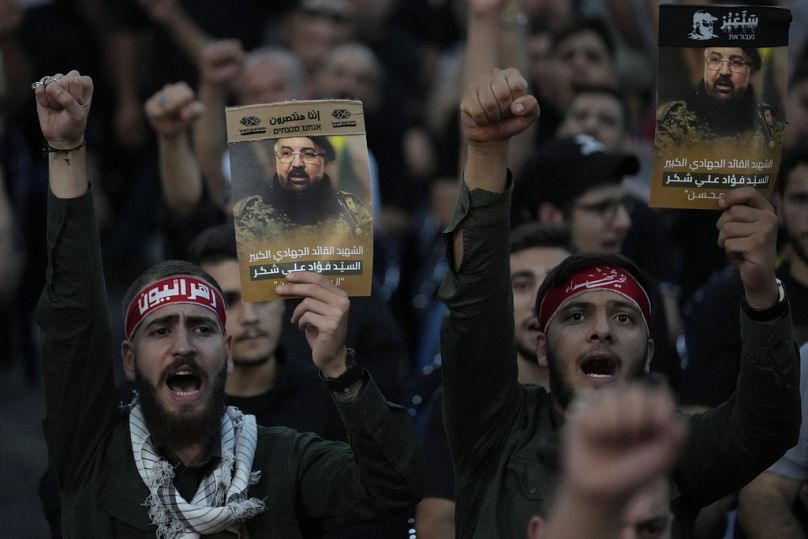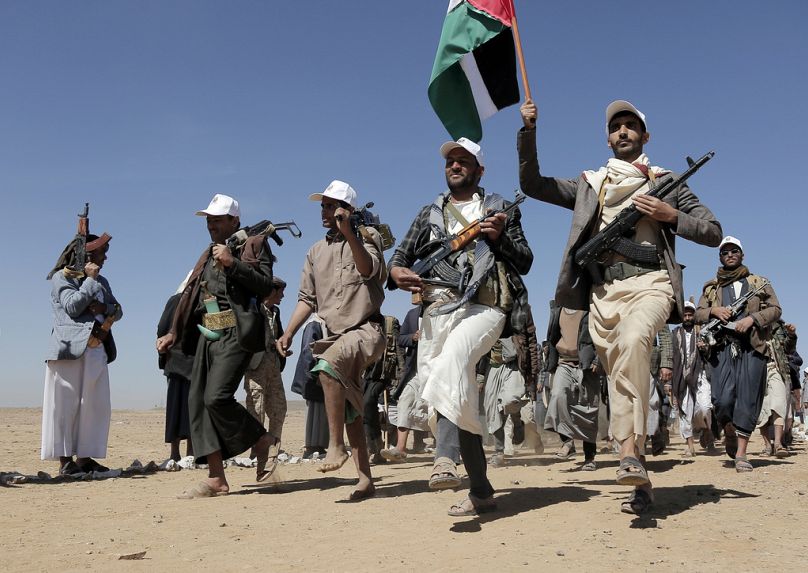As Iran vows to retaliate against Israel for its alleged assassination of Hamas leader Ismail Haniyeh in its territory, Tehran may make use of militias and regional allies to exact revenge.
The suspected Israeli assassination of Ismail Haniyeh sent shockwaves across the Middle East — not least in Iran, where the predawn airstrike against the Hamas leader took place.
Though Israel has not claimed responsibility for killing Haniyeh, Tehran has threatened to answer for his death in kind in a region already ravaged by the Israel-Hamas war.
"The Islamic Republic of Iran is in no way seeking to expand the scope of war and crisis in the region, but this (Israel) regime will definitely receive a response for its crimes and insolence," Iranian President Masoud Pezeshkian reportedly said on Monday.
There's no telling at the moment what Iran's retaliatory measures could look like, but it's possible that it would call upon the regional militias that the Islamic Republic has armed for decades.
The country has a history of supplying weapons to militias and its allies in the Middle East, all of which could potentially play a part in a strike against Israel.
Who has Iran armed and why?
Iran's policy of arming militias took root in the aftermath of the 1979 Islamic Revolution.
Before it, the US provided major weapon systems, including F-14 Tomcat fighter jets, to the government of former Shah Mohammad Reza Pahlavi. Yet after the Iranian revolution and the US Embassy hostage crisis, those shipments and needed maintenance programmes came to a stop.
Iran's eight-year war with Iraq in the 1980s destroyed much of its arsenal, and international sanctions on the country, including over its nuclear programme, have only made things worse: its weaponry stalled while Israel and Gulf Arab states allied with the US have received advanced arms.
While developing its own missile programme, Iran can't match those sophisticated weapons, and so instead has come to rely on militias as an asymmetric threat to squeeze both Israel and the US.
Hezbollah
Iran has several regional allies it has been arming in earnest since the 1980s.
It began with the Shiite forces in Lebanon fighting against Israel, which then became the Hezbollah militia that is currently engaging in drone strikes in Israel.
Israel remains highly wary of Hezbollah, particularly over the vast missile arsenal it is believed to possess and its battle-hardened forces who also supported Syrian President Bashar Assad in his country's long war.
While Israel has sophisticated missile defences, including its Iron Dome system, a mass barrage of fire from Hezbollah and others at the same time could overwhelm the country.
Estimates suggest Hezbollah has an arsenal of 150,000 rockets and missiles, including precision-guided missiles. The militia also has been blamed for suicide bombings in the past, including a 1983 bombing in Beirut that killed 241 US servicemen, though the group maintains it wasn't behind the attack.
Hezbollah also has drones and surface-to-air missile systems. Hezbollah's forces number as many as 25,000 full-time fighters, with additional tens of thousands in reserves, according to an Israeli military assessment. In 2021, Hezbollah's leader Hassan Nasrallah said the group had 100,000 trained fighters.
But the list of Iranian-backed militias doesn't stop there. Such is the range of groups armed by Tehran that it has come to label it the "Axis of Resistance".
Iraqi militias
In Iraq, Iran supported a slew of forces that mobilised in 2014 to battle the Islamic State group.
Those state-sanctioned, mainly Shiite militias, known as the Popular Mobilisation Forces, have grown into a powerful political faction armed with rockets, drones and other weaponry. The International Institute for Strategic Studies puts their strength at some 180,000 fighters.
Other smaller or little-known militant groups have emerged and claimed attacks against US forces as well amid this Israel-Hamas war. Iran-backed armed groups attacked US personnel in Iraq more than 60 times between October and 4 February, according to the Congressional Research Service.
The deadliest came on 28 January, when the US said a drone launched by Iranian-backed Iraqi militias hit a facility known as Tower 22 in Jordan on the Syrian border, killing three American troops and wounding dozens of others.
In response, US airstrikes hit more than 85 targets at seven locations, including command and control headquarters, intelligence centres, rockets and missiles, drone and ammunition storage sites and other facilities connected to the militias or the Guard's expeditionary Quds Force, which is specialised in unconventional warfare and military intelligence operations.
Palestinian militant forces
Iran has continued to arm allies whenever the opportunity has arisen, even arming Sunni militants while viewing itself as the world's defender of Shiite Muslims.
One of the clearest examples of this is the militant forces in Palestine: despite being Sunni, both the Palestinian militant group Hamas and Islamic Jihad have received weaponry and other equipment from Iran.
The groups, however, have been struck hard by Israel since the 7 October Hamas attack that began the war, which saw militants kill 1,200 people and take 250 others hostage.
Israel's war on Hamas in the Gaza Strip since has killed at least 39,580 Palestinians, according to Gaza's Health Ministry, which does not distinguish between civilians and combatants in its count. Israel's military says it has killed roughly 15,000 militants in the war.
Yemen's Houthi rebels
The Houthis have held Yemen's capital, Sanaa, since 2014 as part of that country's ruinous war. They follow the Shiite Zaydi faith, a branch of Shiite Islam that is almost exclusively found in Yemen.
While broadly an insurgent force, the group with Iran's support is now able to launch drone and missile attacks that have drastically disrupted shipping in the Red Sea corridor and now even reach Israel.
The US Navy's efforts at stopping the shipping attacks have led to the most intense continuous combat its sailors have faced since World War II but have yet to end the assaults.
The amount of direct command Iran wields over the Houthis, however, remains a matter of debate among experts.
The Houthis' attacks have raised their international profile while cracking down on dissent at home.
The rebels claim they've recruited 200,000 additional fighters since launching their attacks. The rebels and their allies have a fighting force of some 20,000 fighters, according to the International Institute for Strategic Studies.
What could any retaliatory strike look like?
Following an Israeli attack on the Iranian Embassy compound in Syria in April, Iran launched 170 bomb-carrying drones, more than 30 cruise missiles and more than 120 ballistic missiles toward Israel.
Israel, the US and other nations shot down many of the projectiles, some of which came from Yemen.
Iran could launch a similar assault, but this time, Hezbollah may get involved as the militia seeks revenge for the Israeli strike last week, killing senior commander Fouad Shukur.
Such an assault could strain Israeli air defences, meaning more missile strikes, raising the risk of casualties — and of a further escalation experts fear could lead to a wider regional war.













